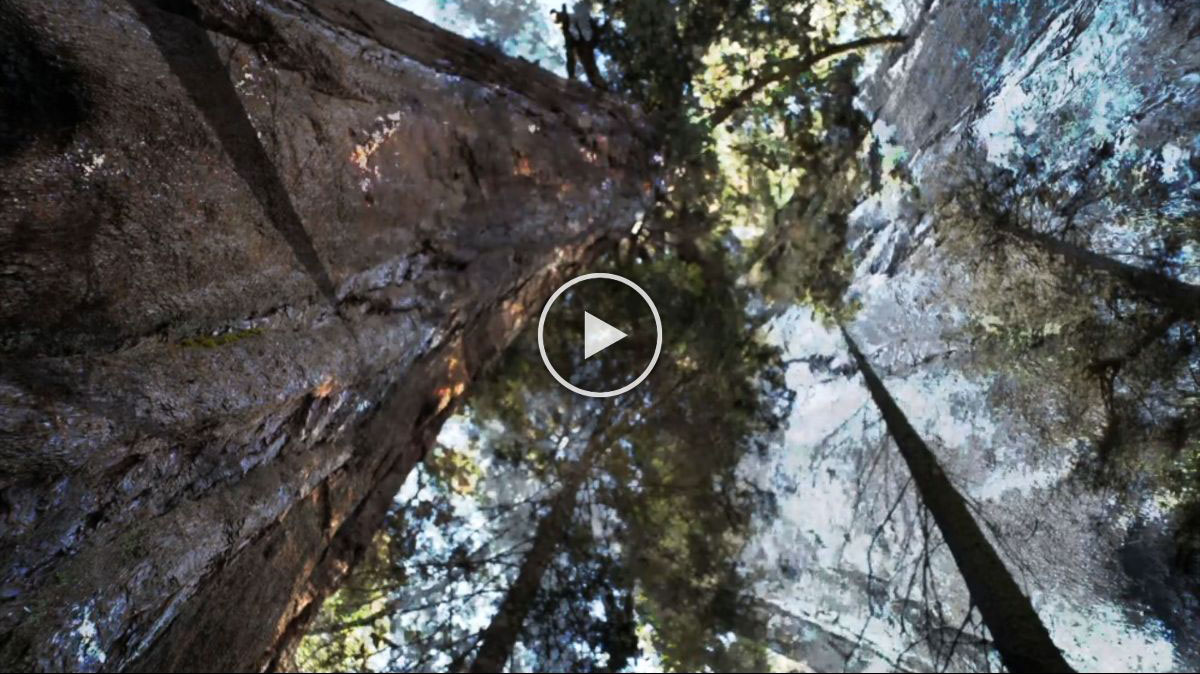ART-PRESENTATION: Arboreal
 During the past few centuries, Western theories of biological evolution, alongside economic models centered around the individual, have taught us that competition is the motor of life and that genes are selfish, leading all organisms to fight for themselves, with only the fittest surviving. But trees teach us a different and more collaborative side of the story. The more diverse a forest is, the healthier it is, and the more closely connected its trees are, the more resilient they become.
During the past few centuries, Western theories of biological evolution, alongside economic models centered around the individual, have taught us that competition is the motor of life and that genes are selfish, leading all organisms to fight for themselves, with only the fittest surviving. But trees teach us a different and more collaborative side of the story. The more diverse a forest is, the healthier it is, and the more closely connected its trees are, the more resilient they become.
By Efi Michalarou
Photo: The Minnesota Street Project Archive
Different trees contain diverse and complementary bits of vital knowledge, and should a single species dominate or become invasive, the forest, as a whole, weakens. While this might sound like a metaphor, it’s a biological fact: life can only flourish if and when different living beings coexist alongside each other. Homogeneity and lack of inter-connectedness prevent life from thriving. Trees tell us how little we know about how survival actually works. They form underground networks, where carbon, fungi, and nutrients are passed from one to another. Chemical signals by one tree prepare another for danger because, together, all trees behave as a single body or organism. A forest is not just a collection of trees, but a complex society that thrives and relies on cooperation, rather than self-interest. While the artists included are human animals, the exhibition “Arboreal” proposes an “arboreal” way of understanding the world and invites us to rethink the relationship we have with the forests and with one another. The artists’ works draw on Indigenous knowledge and experience, notions of inner sound and resonance, Buddhist pragmatism, the practice of walking, activism, and biology. While trees appear to be static, unable to move from one place to another, their bodies contain the many interconnected layers and nuances that make life possible.
Aycoobo also known by his Spanish name, Wilson Rodríguez, is a Nonuya Indigenous artist whose practice started with the teachings of his father, Abel Rodríguez, about his vast botanical knowledge of the Amazon forest. Currently, Aycoobo’s artistic practice and search is based on the feelings, inspirations, and observations he experiences during rituals with sacred plants, which, for him, allow for an exploration and connection with the higher spiritual presence that exists in all living things. He lives and works in Bogotá, Colombia, where he and his family were forced to flee in the early 2000s due to the decades-long violent conflict taking place in non-urban areas across the country. Bill Fontana is a composer and artist who developed an international reputation for his pioneering experiments in sound. Since the early 70’s, Fontana has used sound as a sculptural medium to interact with and transform our perceptions of visual and architectural spaces. He has realized sound sculptures and radio projects for museums and broadcast organizations around the world. Helen Mirra is a conceptual artist engaged with Buddhist and pragmatist philosophies. She is currently interested in rocks, gradual slopes, and the liberatory paradigm of autist-nature. Since 2006, her practice has integrated the primary acts of walking and weaving, as well as the secondary material of language. Delcy Morelos is an artist born and raised in Córdoba, a state of Colombia regularly impacted by paramilitary violence. Her work explores submission, exploitation, oppression, brutality, and contempt between people and their relationship to nature at large. Her projects eliminate the distinctions between painting, sculpture and installation, often using soil and other natural elements as her primary materials. Emerson Uýra is a hybrid entity made of Emerson Munduruku, an Indigenous artist, educator, activist, biologist, and ecologist, and Uýra Sodoma, a drag queen persona born in 2016, who embodies a “tree that walks” via performance and photo-performance. The character Uýra exposes and aims to cure the diseases caused by systemic colonial violence. She is interested in living systems and how they’re violated. She (re)tells stories about nature, enchantments, and the intersections found in the forest-city landscape from the perspective of diversity, dissent and adaptation. Cecilia Vicuña is a poet, artist, filmmaker and activist. Her work addresses pressing concerns of the modern world, including ecological destruction, human rights, and cultural homogenization. From 2019 to 2021, a retrospective of her work traveled from the Kunstinstitut Melly in Rotterdam to the MUAC in Mexico City and is currently on view at CA2M – Centro de Arte Dos de Mayo in Madrid.
Participating Artists: Aycoobo (Wilson Rodríguez), Bill Fontana, Helen Mirra, Delcy Morelos, Emerson Uýra and Cecilia Vicuña.
Photo: Bill Fontana, 2019
Info: Curator: Juana Berrío, The Minnesota Street Project, 1150 25th St, Building B, San Francisco, Duration: 26/3-26/6/2021, Days & Hours: Tue-Sat 11:00-18:00, http://minnesotastreetproject.com


